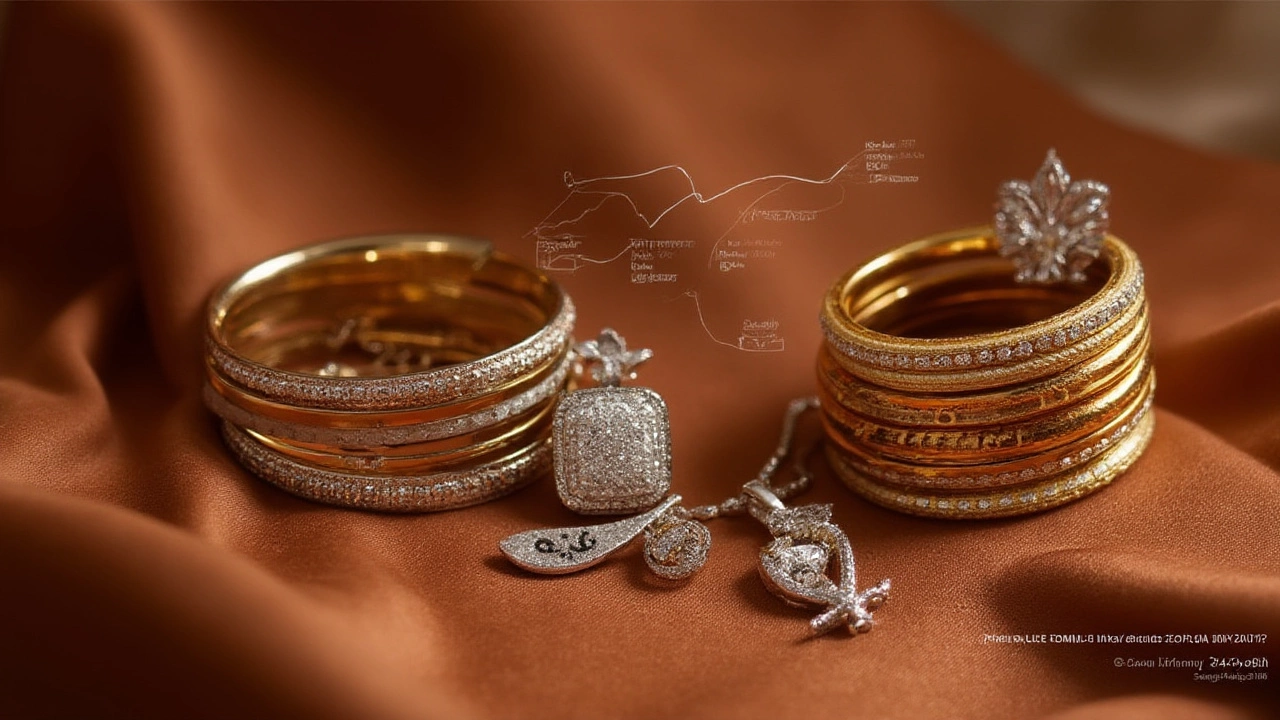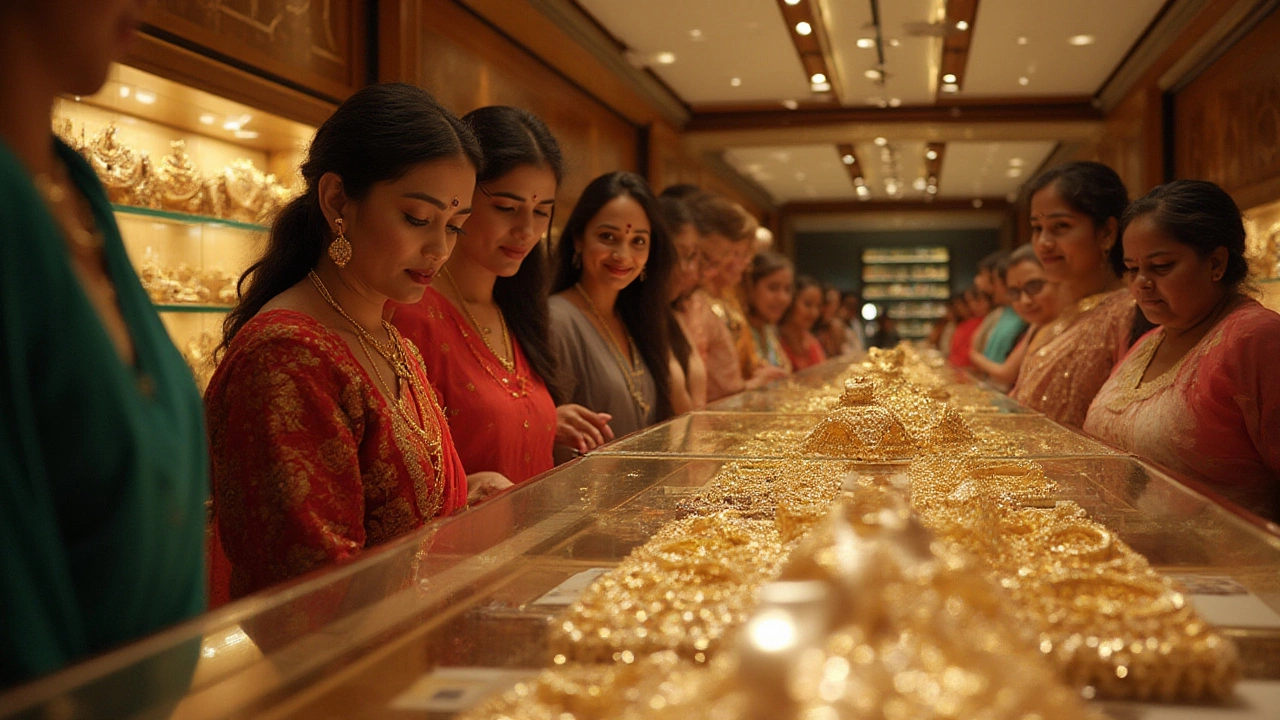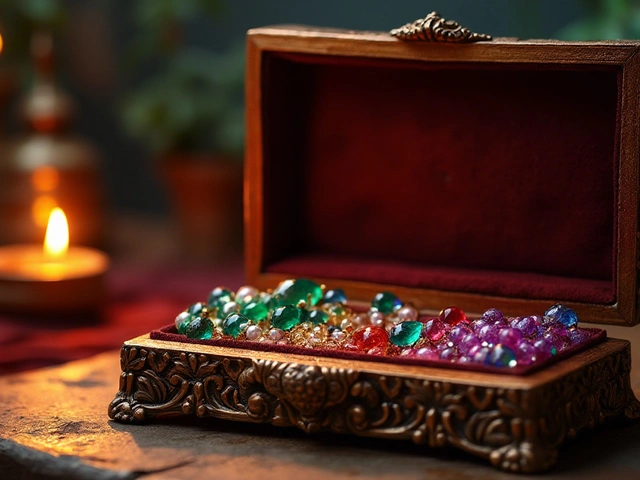Imagine buying a sparkling necklace and knowing it won’t just dazzle for one night – it could actually make you money down the line. It’s not just hype. In today’s market, jewelry is pulling double duty as both status symbol and serious investment. Some brands have turned their boxes into mini treasure chests, while others just don’t perform when it’s time to resell. The numbers definitely don’t lie, and neither does the market for pre-owned pieces. Still, most people don’t realize how wildly different resale values can be depending on the brand stamped inside the clasp.
The Real Game Changers: Why Brand Name Matters in Jewelry Resale
If you think diamonds are forever, the real story is that the jewelry resale value attached to certain brands can outshine even the most flawless stone. The pre-owned luxury market is now estimated to be worth over $40 billion globally (according to Boston Consulting Group’s 2024 report), with jewelry grabbing a bigger slice every year. But not every shimmering logo packs the same investment punch. Resale prices can swing by as much as 60% between two necklaces of similar materials from different brands.
The question on everyone’s mind: why does a Cartier Love bracelet—or a Van Cleef & Arpels Alhambra—command massive bids on resale sites while a generic gold bracelet struggles to get noticed? Prestige, craftsmanship, brand history, and, let’s be honest, a bit of hype. Buyers want what influencers and celebrities flaunt on Instagram, but they also want the peace of mind that comes with buying from heritage names with serious staying power. Those little red, blue, or green boxes are seen as proof of long-lasting value—and sometimes even as a ticket to ROI in a recession-resistant market.
Don’t overlook the influence of pop culture. When Rihanna rocks a statement piece from Bulgari or Zendaya chooses Harry Winston for a red carpet, resale prices for those brands can skyrocket overnight. And sometimes, a limited-edition piece or discontinued collection from a top house becomes even more valuable than mass-produced staples.
The Top Jewelry Brands That Dominate Resale Value
So, which brands actually come out on top for resale? Year after year, a few names rise above the rest—proven by data, not just Instagram likes. Here’s what resale platforms like The RealReal, 1stDibs, and Rebag report consistently: Cartier is the king of resale value. Their classic pieces, especially the Love, Juste un Clou, and Trinity collections, regularly fetch over 90% of their original price if well cared for. In some cases, rare vintage items sell for much more than their initial retail.
Tiffany & Co. is right behind. The Tiffany Setting ring, Elsa Peretti bone cuffs, and classic Return to Tiffany pieces are as close as you’ll get to guaranteed liquidity in fine jewelry. Followed by Van Cleef & Arpels, famous for its clover-themed Alhambra, which often resells at a premium—thanks to near-mythic quality controls and tight distribution. Hermès and Bulgari also regularly outperform most others, especially with rare color stones or iconic designs like the Serpenti. Here’s a snapshot of what to expect on the resale market:
| Brand | Avg. Resale Value (% of Original Price) | Most Popular Collection |
|---|---|---|
| Cartier | 85-95% | Love, Juste un Clou, Trinity |
| Tiffany & Co. | 70-85% | Tiffany Setting, Elsa Peretti, Return to Tiffany |
| Van Cleef & Arpels | 75-90% | Alhambra |
| Hermès | 60-80% | Chaîne d'Ancre, Kelly |
| Bulgari | 60-80% | Serpenti, B.Zero1 |
| Graff | Up to 70% | Classic Diamond Collections |
Jewelry houses like Harry Winston and Chopard carry incredible resale value for high-carat or special occasion pieces, but their volume is low and resale prices can swing more—the audience for six-figure necklaces is small. For most buyers, sticking with tried-and-true pieces from Cartier, Tiffany, or Van Cleef is the safest play for watching your jewelry box double as an investment portfolio.

Digging Deeper: What Makes Certain Brands So In-Demand?
There’s real science behind why some names consistently see higher returns on the resale market. The first factor: design DNA. Brands like Cartier and Van Cleef & Arpels create signature motifs that fans instantly recognize, year after year. That consistency means people know what they’re buying—and want it badly enough to pay up, even used.
Next, there’s the question of materials. Not all gold is equal. Top houses use gold alloys and diamonds that often exceed industry minimums, sometimes verified by unique serial numbers or laboratory reports (especially with modern pieces). It’s not uncommon to see resale platforms authenticate a Cartier ring in minutes, while a non-branded ring can sit for weeks, if it sells at all.
Marketing matters, too. When a high-profile celebrity wears a Chanel Camélia brooch, it’s not long before prices for those skyrocket on eBay and Vestiaire Collective. Plus, the emotional pull. Tiffany’s blue box is more than packaging—it’s a signifier of ‘forever,’ which makes buyers more willing to pay top dollar for that little extra piece of history.
Let’s not ignore rarity. Limited-run pieces or discontinued designs become unicorns in the resale jungle. And heritage matters: Chanel, born in the roaring twenties, and Cartier, patron of royals, both tap into the power of legacy.
What to Know Before Investing: Tips for Maximizing Jewelry Resale Value
Want to actually come out ahead (or at least break even) the next time you buy? It’s not just about picking the right name—you’ve got to be smart with the nitty gritty details. Here’s what separates the true jewelry investors from everyone else:
- Buy classic styles: Logos and iconic shapes like Cartier’s Love, Van Cleef’s Alhambra, or Tiffany’s T are always in style.
- Keep every piece of paperwork: Box, bag, receipts, authenticity certificates—they’re all money in the bank when it’s time to sell.
- Avoid heavy engraving or personalizations, unless it’s a limited series. Customizations chip away at resale value fast.
- Stay on top of market trends. If a celebrity wears a piece you own, watch the listings. Spikes in demand can happen fast, and they don’t always last long.
- Condition is everything. Even hairline scratches can knock the price down. Professional cleanings and gentle wear make a difference.
If you’ve got your eyes on investing, know that jewelry resale isn’t like real estate or tech stocks—it’s emotional, driven by taste, scarcity, and the kind of status signals only a few brands deliver. In 2025, research from Sotheby’s shows that 33% of luxury jewelry buyers are now people under 35, which means the market is only getting younger and savvier about resale potential.
And even if you just want your jewelry to pay off someday, treat it like any other asset. Keep the packaging, get insurance, document purchases (including close-up photos), and don’t be afraid to ask jewelers about trade-in programs or in-house upgrades.

Resale Trends for 2025: Where Are Jewelry Investment Returns Headed?
Jewelry isn’t immune to trends, even when it comes to resale. Over the past few years, interest in yellow gold (over white or rose) has surged, with buyers attracted by its throwback warmth. Don’t be surprised if pieces from the ’80s and ’90s keep getting more valuable, especially from brands with old-school cachet like Bulgari and Hermès.
Digital platforms are also making it easier than ever to buy and sell used jewelry. In fact, Rebag reports a 32% jump in pre-owned fine jewelry sales in 2024, with buyers drawn to platforms that offer quick inspection and instant cash offers. 1stDibs and The RealReal now run weekly auctions where rare pieces sometimes go for more than retail, especially if they have impeccable provenance. Here are a few tips for riding the next wave:
- Stay alert for collabs and short-run drop collections—they can be instant classics.
- Expect technology (blockchain certifications, digital receipts) to keep inflating resale prices for authenticated pieces.
- Watch the Asian and Middle Eastern luxury markets: collectors in these regions have begun snapping up high-value jewelry as both status and inflation hedges.
- Don’t overlook men’s jewelry: it’s a rising segment, and resale values for “unisex” or classic men’s pieces from brands like Cartier and Bulgari are climbing fast.
No matter how wild the trends get, one thing is clear: the value leaders—Cartier, Tiffany & Co., Van Cleef & Arpels, Hermès, and Bulgari—aren’t going anywhere. If your goal is to wear your investment on your wrist, stick with classics from these names, keep every document, and treat your jewels as carefully as you treat your sneaker collection or rare watches. Down the road, you’ll be glad you didn’t settle for anything less.


